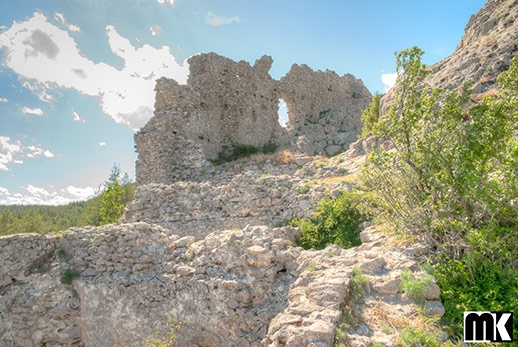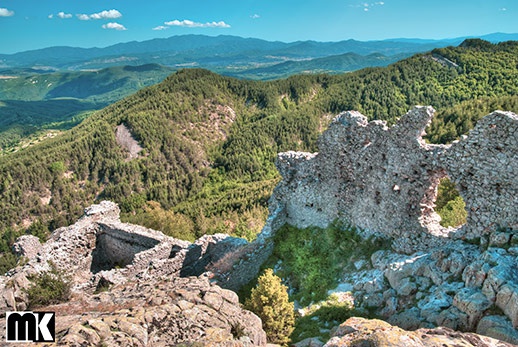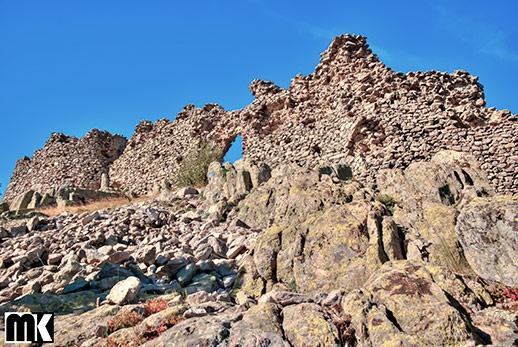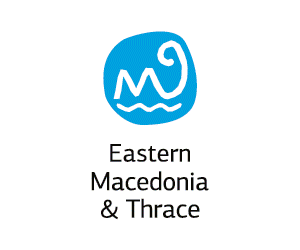Traveler's Guide
East Macedonia & Thrace
Medieval fortress Ustra near the village of Ustren

The fortress is situated on a high, elongated ridge of the same name. The peak is 1015 m high. The area is 1.2 acres. The fortress wall is 113 meters long and has a U-shape. At ground level the wall is 2.8 m wide and at the top it is 1.75 meters. Some places are preserved to a height of 8 meters. The fortress had three defensive towers - one semi-circular and two rectangular with three floors each. The first floors were underground and were used for water storages. They were coated with stucco, obtained by mixing mortar with crushed bricks and large pieces of pottery. The towers had internal staircases, only some of which have been preserved. The entrance was from the east. There are several rock-hewn steps that have been preserved. Doors opened vertically. There were eight rooms, built in the south and southeast part. The largest was 11.0 Х 6.0 m, while the smallest 0.50 Х 1.70 m. The fortress had three floors. The ground floor is 5.8 meters deep and served either as a warehouse or water storage. The upper two floors were living quarters. The first archaeological excavations were carried out in 1971- 1973. Numerous (over 1000) metal objects were found- iron arrows, parts of a helmet, bronze and silver crosses, and 14 pottery utensils, cup-shaped copper coins and others.
According to archaeological data, the earliest dating is during the ruling of Constantine VII Porphyrogenitus - (913-959). At that time the Bulgarian Tsar Simeon I probably took over the castle, but subsequently ceded it to Byzantium and it was renamed to "vasileopator" – which means the supreme guardian of the emperor, who married one of his daughters. The subsequent dissolution of the contract by Zoe - the mother of the emperor, soon led to a crushing loss of the Byzantines at the Battle of Aheloy in 917. Nevertheless, after the death of Simeon in the year 927,the fortress permanently remained in Byzantine hands, although there is indirect evidence suggesting that during late feudalism and second Bulgarian Empire (12th - 14th ) century it was captured by Ivan Asen II. Written information about the fort is also given by George Akropolites (in the 13th century) in his historical work called "Annals." It is valuable as written by a contemporary, whose official position as Grand Logothete, military commander, and confidential ambassador afforded him frequent opportunities of observing the course of events.
Address
No information available.Contact Information
No information available.







